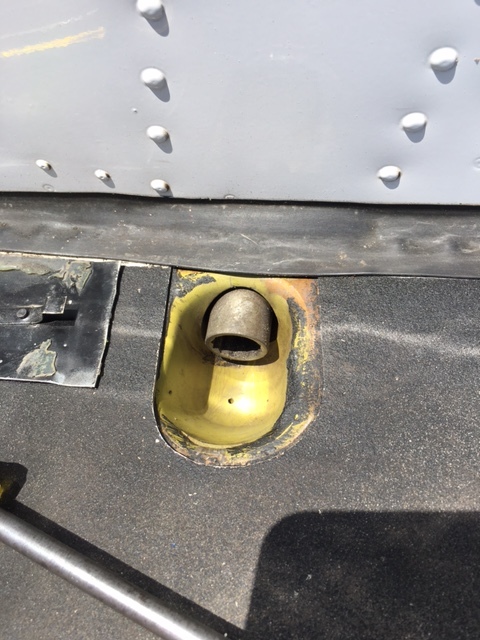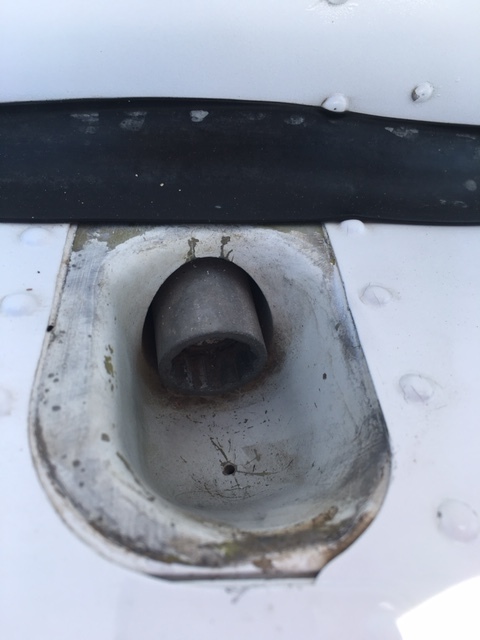Hi @NCYankee I expect it would save a portion of the container cost, but the freight cost is probably similar to the engineering cost of disassemble and re assemble. Also I haven’t received a reliable pirep on an East Coast specialist shipping firm who can carry out the disassembly, paperwork and packing.
The pros and cons are interesting on ferry vs container.
On the ferry flight you hopefully:
Aircraft arrives sooner
Aircraft engine is being operated during ferry
Some cost saving, if owner carries out the ferry
The cons on the ferry flight are:
Aircraft goes tech or is damaged in a remote location
Potential unreliable ferry service, and higher cost with contract ferry pilot
SEP over water and hostile terrain
With the container route the main risk I see is two fold
Disassembly and re assembly causes potential damage/mis rigging, or the need to source hard to find parts, for example new wing bolts
Aircraft is inactive in transit in salt air conditions, and also potential damage during shipping/ground transport
Am keeping the west coast shipping specialist on stand by, in the event am not able to get an expedited FAA registration document.


What a dry country wing bolt bathtub looks like.
If you can fly it back – do that, pulling apart an aircraft risks damage to all sorts of things to wouldn’t expect.
I have just brought a twincom back from Annemasse in pieces – and as is normal, once you’re pulling it apart you spot some things, then more things, then you decide to pull out all the old avionics wiring left behind, then you decide on new windows since you broke one, then you decide on a 1 piece screen as otherwise the new windows won’t match…….before you know it the plane you were happy with becomes a project/money sink.
Advantages are you get the opportunity to see things on the Airframe that you wouldn’t otherwise be able to access, so you could include that in the cost of the rebuild.
The other issue you have is that there are very few people who know how to rig an aircraft properly in the UK. We seem to have a skills shortage in people who understand 1: how to work on a 60 year old Airframe and 2: how they should fly….
If you want someone to come with for the flight – happy to come with, a transatlantic crossing is on the bucket list!
I’ve been told that if you dismantle a plane, it will never fly “straight” afterwards. It takes just a 1mm difference in the trailing edge height (in effect, AOA) between the two wings and you have a hopeless trim situation.
So it is ok for “spamcans” whose performance varies anyway. None of the ones I used to fly were anywhere near the book numbers.
I am sure this is responsible for most of the reports of TKS installations slowing the plane down 5-7kt. This is well worth a read.
My experience and observation is that strut braced wings take more effort to re-rig than cantilevered wings, particularly if the have a v-strut that allows for adjustment of angle of incidence on each individual wing. Biplanes too, only more so. Faster aircraft with cantilevered wings are very generally more straightforward to take apart and put back together without changing trim.
I’ll have both cantilever wings off my plane this weekend, and back on again. It will fly exactly the same as it did before, although given that the purpose of this exercise is to replace some components in the aileron control linkages I’ll need to check their rigging. That is fairly simple. There is precisely zero adjustment in the wings angle of attack, or in the relative deflection of the flaps, so you can be sure those factors won’t change.
As a reminder  the phrase ‘spam can’ was invented by tube and rag antiquers a a pejorative description of monocoque aluminum construction postwar aircraft that were at the time being produced in high volume and sold to a non-traditional consumer market. The OP’s Bonanza, Socata TB-series, my plane, Cessnas, Grumman Americans, low wing Pipers etc etc are all spam cans. A Staggerwing Beech, Citabria, Bücker Jungmann or Travel Air biplane is not a spam can.
the phrase ‘spam can’ was invented by tube and rag antiquers a a pejorative description of monocoque aluminum construction postwar aircraft that were at the time being produced in high volume and sold to a non-traditional consumer market. The OP’s Bonanza, Socata TB-series, my plane, Cessnas, Grumman Americans, low wing Pipers etc etc are all spam cans. A Staggerwing Beech, Citabria, Bücker Jungmann or Travel Air biplane is not a spam can.
You need an optimistic disposition on this exercise. A few multi AMU items emerge as you learn more about the process.
Arranging permanent export from the last port of call in the USA, which is planned to be Bellingham WA, requires a customs agent. Beechtalk provided a pirep on one such agent, and they have agreed to assist, but navigating US customs will cost some AMUs. Entry in the UK will also require arranging to pay import VAT and receive a free circulation UK VAT paid receipt. This also requires spending an AMU or so, to sort the paperwork.
I am becoming somewhat inured to these un budgeted items, and am sure some more will emerge as the process gathers pace.
The aircraft has a couple of technically unreleased liens, one over fifty years old, the other over forty years ago. This I am advised is a problem for the seller. The escrow agent provides a service to clear this up, but if this doesn’t work am guessing the seller may need to offer title insurance. Another element in the education process.
Arranging permanent export from the last port of call in the USA, which is planned to be Bellingham WA, requires a customs agent.
The permament export thing (even if keeping the aircraft N-reg) I honestly haven‘t quite understood. Could it be nobody ever bothered about this in past years, and only recently this is becoming more of a matter of attention?
I have only ever become aware of this due to the Aircraft Guaranty fiasco last year…
navigating US customs will cost some AMUs.
Wow. Please elaborate.
Entry in the UK will also require arranging to pay import VAT and receive a free circulation UK VAT paid receipt. This also requires spending an AMU or so, to sort the paperwork
An AMU just to pay UK import VAT??
For sure, for many years, planes were just imported into Europe, mostly by flying them from the US, and no import VAT was paid.
Some countries enforced it (via not registering it onto a local reg) but most didn’t. The UK didn’t. And anyway the N-reg scene was big then so you could have just left it on the N-reg.
If you shipped it in a container, the import VAT could not be avoided.
@boscomantico the last thing you want on a ferry flight is to arrive at the US port of exit and there is a snag in the paperwork. Apparently the paperwork, and due diligence by the customs agent, and co-ordinating it with the relevant customs office is complicated. I had assumed this was a few hundred USD, but in fact it will be over $2k. While not an expert, am satisfied the agent is knowledgeable and the paperwork is not trivial or suitable for a layman.
On UK import VAT am hoping my accountant can sort this out, if not the recommended agent charges £1k. Again having the aircraft stranded in Wick is not ideal, but less frustrating than sitting in Bellingham WA.
I still don‘t understand.
On UK import VAT am hoping my accountant can sort this out, if not the recommended agent charges £1k.
Isn‘t it just a matter of landing at a customs designated airport and saying „hey, I want to pay import VAT for this thing here?
And on the US side: for what do you need a customs agent if you merely want to leave the US in your private aircraft? What constitutes „permanent export“? Merely having the intention in your head of not coming back in the „foreseeable“ future?